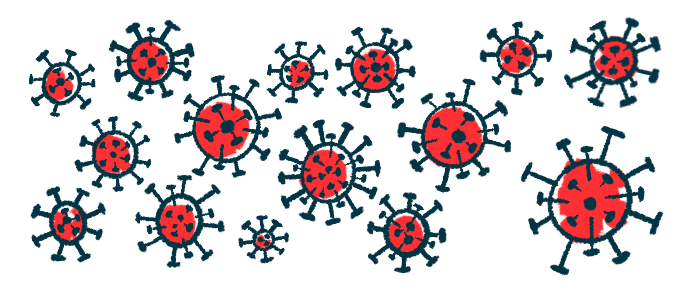Atea’s antiviral treatment combo works for 98% of HCV patients
Once-daily therapy found to clear hepatitis C virus in 4 weeks in study

Note: This story was updated Aug. 22, 2024, to clarify the timeline detailing the results of treatment.
Atea Pharmaceuticals’ once-daily oral antiviral treatment for hepatitis C virus (HCV) — a combination of bemnifosbuvir and ruzasvir — successfully cleared HCV four weeks after treatment was completed in 98% of patients in a clinical study, according to new lead-in trial data.
So far, the Phase 2 study (NCT05904470) has enrolled and treated 60 HCV-infected, treatment-naïve adults without cirrhosis, a complication of hepatitis C virus, or with compensated cirrhosis (Child-Pugh class A).
Based on these lead-in findings, patient recruitment at sites in Canada, Romania, and Moldova has resumed, with a goal of recruiting up to 280 participants in all. The trial now will also include patients with cirrhosis, a serious HCV complication that’s marked by permanent liver scarring.
According to the company, top-line results 12 weeks after completion of the two-month treatment regimen, the study’s overall main goal, are expected later this year.
“Our clinical progress has led to exciting data for our HCV program,” Jean-Pierre Sommadossi, PhD, founder and CEO of Atea, said in a company press release. “I am pleased to share that the 98% [sustained virologic response rate at week 4] rate was confirmed in the final results from the lead-in cohort of the Phase 2 combination study.”
“Enrollment of the remainder of this study is ongoing with topline results anticipated in the second half of 2024,” Sommadossi added.
Trial of combination antiviral treatment will enroll up to 280 patients
The hepatitis C virus, which is spread through blood, can lead to serious liver injury, with the potential to cause liver cancer. While a few people eliminate the virus from the body within a few months without any treatment, most individuals infected with HCV will progress to an ongoing, chronic infection.
“In the U.S., it is estimated that there are 2.4 million individuals infected with HCV,” Sommadossi said. He noted that “rates of new infections and reinfection exceed cure rates, leading to a continuing increase of prevalence.”
Antiviral treatment with one of several effective medications, called direct-acting antivirals or DAAs, is recommended for most people with hepatitis C.
Like the approved medications, bemnifosbuvir and ruzasvir work to disrupt HCV replication, but seek to clear the virus over a shorter treatment period while minimizing interactions with other drugs.
“The key unmet needs identified by healthcare providers in market research recently conducted by Atea include shorter length of treatment with fewer contraindications, particularly drug-drug interactions, which we believe the combination of bemnifosbuvir and ruzasvir has the potential to address,” Sommadossi said.
The lead-in portion of the Phase 2 trial included a total of 60 patients infected with any HCV genotype, or strain, living with a chronic infection. Participants received a two-month once-daily oral treatment with bemnifosbuvir (550 mg) and ruzasvir (180 mg).
The key unmet needs identified by healthcare providers in market research recently conducted by Atea include shorter length of treatment with fewer contraindications, particularly drug-drug interactions, which we believe the combination of bemnifosbuvir and ruzasvir has the potential to address.
Data showed that four weeks of treatment rapidly reduced the HCV load to near or below lower detection limits in all 60 patients, and that by week eight, the end of treatment, all had achieved a viral load below the detection limit. Four weeks after treatment ended, all but one of the 59 patients with evaluable data showed HCV clearance, representing a 98% efficacy rate.
The combination antiviral treatment was generally safe and well tolerated, with mostly mild adverse events, according to Atea. No drug-related serious adverse events and no treatment discontinuations were reported.
Because the 98% efficacy rate one month after treatment completion exceeded the protocol-defined efficacy criterion of 90% or greater, the study will now continue with up to another 220 participants. It will assess the safety and a sustained virologic response 12 weeks after end of treatment. It also will evaluate failure to suppress HCV load, sustained virologic response at 24 weeks post-treatment, and viral resistance.







